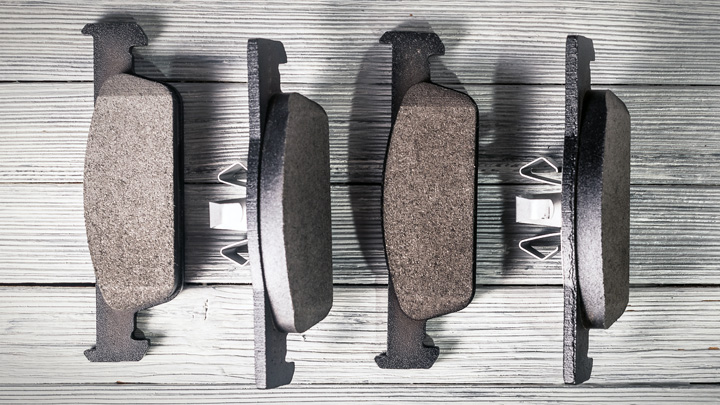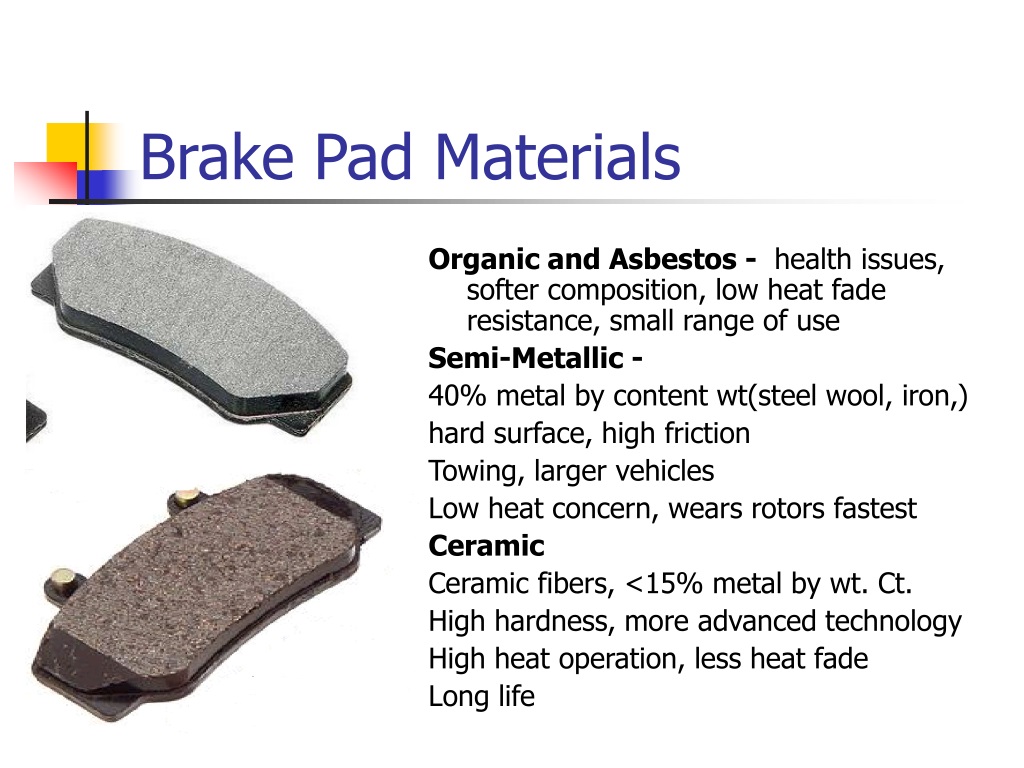Understanding the Brake Pad Dilemma
Selecting the right brake pads for your vehicle is a crucial decision that can significantly impact your safety on the road. With the constant wear and tear, brake pads are prone to degradation, which can lead to reduced stopping power, increased stopping distances, and even accidents. The consequences of poor brake performance can be severe, making it essential to choose the right type of brake pads for your vehicle. The debate between sintered versus organic brake pads has been ongoing, with each type having its unique characteristics, advantages, and disadvantages. By understanding the differences between these two types of brake pads, you can make an informed decision and ensure your vehicle is equipped with the best possible braking system.
What are Sintered Brake Pads?
Sintered brake pads are a type of brake pad that has gained popularity in recent years due to their exceptional performance and durability. Composed of a mixture of metallic powders, such as copper, iron, and steel, sintered brake pads are manufactured through a process called powder metallurgy. This process involves compressing and heating the powders to create a strong, porous structure that provides excellent heat dissipation and friction properties. The benefits of sintered brake pads are numerous, including improved heat dissipation, increased durability, and enhanced stopping power. Additionally, sintered brake pads are less prone to brake fade, which occurs when the brake pads overheat and lose their stopping power. With their superior performance and durability, sintered brake pads are a popular choice among drivers who demand the best from their vehicles.
The Organic Alternative: A Softer Approach
Organic brake pads offer a distinct alternative to sintered brake pads, catering to drivers who prioritize comfort and environmental considerations. Composed of a mixture of organic materials, such as rubber, Kevlar, and resin, organic brake pads are designed to provide a softer, more gentle braking experience. The advantages of organic brake pads are numerous, including quieter operation, reduced dust production, and improved pedal feel. Additionally, organic brake pads are generally more environmentally friendly, as they produce fewer toxic fumes and particles during the braking process. However, organic brake pads also have some drawbacks, including reduced stopping power and increased wear rates compared to sintered brake pads. Despite these limitations, organic brake pads remain a popular choice among drivers who value comfort and environmental sustainability.
How to Choose Between Sintered and Organic Brake Pads
Selecting the right brake pad type can be a daunting task, especially with the numerous options available in the market. To make an informed decision, it’s essential to consider several factors that affect brake pad performance. Here’s a step-by-step guide to help you choose between sintered and organic brake pads:
Step 1: Assess Your Driving Style – Aggressive drivers who frequently engage in high-performance driving may benefit from sintered brake pads, which offer improved heat dissipation and durability. On the other hand, drivers who prioritize comfort and quiet operation may prefer organic brake pads.
Step 2: Consider Your Vehicle Type – High-performance vehicles, trucks, and SUVs often require sintered brake pads to handle their increased weight and power. In contrast, smaller vehicles and those used for city driving may be better suited for organic brake pads.
Step 3: Evaluate Environmental Conditions – Drivers who frequently encounter extreme temperatures, heavy traffic, or mountainous terrain may benefit from sintered brake pads, which offer improved fade resistance. In contrast, drivers who operate in mild conditions may prefer organic brake pads.
Step 4: Weigh the Importance of Noise and Dust – If you prioritize a quiet and clean braking experience, organic brake pads may be the better choice. However, if you’re willing to compromise on noise and dust for improved performance, sintered brake pads may be the way to go.
By considering these factors, you can make an informed decision about which brake pad type is best suited for your vehicle and driving needs. Remember, the right brake pad can significantly impact your safety on the road, so it’s essential to choose wisely.
Sintered vs Organic Brake Pads: A Performance Comparison
When it comes to brake pad performance, sintered and organic brake pads exhibit distinct characteristics that set them apart. Understanding these differences is crucial in making an informed decision about which brake pad type is best suited for your vehicle.
Stopping Power: Sintered brake pads generally offer superior stopping power, especially in high-performance driving scenarios. This is due to their ability to maintain consistent friction levels, even at high temperatures. Organic brake pads, on the other hand, may exhibit slightly reduced stopping power, but still provide reliable braking performance.
Fade Resistance: Sintered brake pads are renowned for their exceptional fade resistance, which enables them to maintain braking performance even after repeated heavy braking. Organic brake pads, while still resistant to fade, may not match the performance of sintered brake pads in this regard.
Pedal Feel: Organic brake pads are often praised for their smooth, quiet operation, which translates to a more comfortable pedal feel. Sintered brake pads, while still providing a responsive pedal feel, may exhibit slightly more noise and vibration during braking.
In the sintered versus organic brake pads debate, it’s essential to consider the specific needs of your vehicle and driving style. While sintered brake pads excel in high-performance scenarios, organic brake pads offer a more comfortable, quiet braking experience. By understanding the performance differences between these two brake pad types, you can make an informed decision about which one is best suited for your ride.
Real-World Examples: Sintered and Organic Brake Pads in Action
To better understand the performance differences between sintered and organic brake pads, let’s examine some real-world examples of vehicles that use these brake pad types.
The Porsche 911, a high-performance sports car, comes equipped with sintered brake pads. These brake pads are designed to handle the intense heat and friction generated by the 911’s powerful engine and aggressive driving style. The sintered brake pads provide exceptional stopping power and fade resistance, making them an ideal choice for this high-performance vehicle.
In contrast, the Toyota Prius, a hybrid electric vehicle, uses organic brake pads. These brake pads are designed to provide a quieter, smoother braking experience, which is well-suited for the Prius’s city-driving focus. The organic brake pads also produce less dust and noise, making them a popular choice for environmentally conscious drivers.
The Ford F-150, a heavy-duty pickup truck, offers both sintered and organic brake pad options. The sintered brake pads are designed for heavy-duty towing and hauling, providing exceptional stopping power and fade resistance. The organic brake pads, on the other hand, are better suited for lighter-duty driving, offering a quieter and smoother braking experience.
These real-world examples demonstrate the importance of selecting the right brake pad type for your vehicle and driving style. By understanding the performance differences between sintered and organic brake pads, you can make an informed decision about which brake pad type is best suited for your ride. Whether you’re driving a high-performance sports car or a family-friendly SUV, the right brake pads can make all the difference in terms of safety, performance, and overall driving experience.
The Verdict: Which Brake Pad Type Reigns Supreme?
After examining the characteristics, benefits, and drawbacks of sintered and organic brake pads, it’s clear that each type has its strengths and weaknesses. The verdict ultimately depends on your specific driving needs and preferences.
For high-performance driving, track days, or heavy-duty towing, sintered brake pads are the clear winner. Their exceptional stopping power, fade resistance, and durability make them ideal for demanding driving scenarios. However, their increased noise and dust production may be a drawback for everyday driving.
On the other hand, organic brake pads are perfect for city driving, commuting, or environmentally conscious drivers. Their quieter operation, reduced dust production, and smoother pedal feel make them an attractive option for those who prioritize comfort and eco-friendliness. However, their reduced stopping power and fade resistance may not be suitable for high-performance driving.
In the sintered versus organic brake pads debate, there is no one-size-fits-all solution. The right brake pad type depends on your unique driving style, vehicle type, and environmental conditions. By understanding the strengths and weaknesses of each type, you can make an informed decision about which brake pad is best suited for your ride.
Ultimately, the key to choosing the right brake pad type is to consider your specific needs and priorities. Whether you’re a performance enthusiast or an eco-conscious driver, there’s a brake pad type that’s right for you. By weighing the pros and cons of sintered and organic brake pads, you can make a informed decision that ensures optimal braking performance and safety on the road.
Making an Informed Decision: Tips for Brake Pad Selection
When it comes to selecting the right brake pads for your vehicle, there are several factors to consider beyond the sintered versus organic brake pads debate. Here are some final tips and considerations to ensure you make an informed decision:
Warranty and Support: Look for manufacturers that offer a comprehensive warranty and dedicated customer support. This can provide peace of mind and protect your investment in the long run.
Price and Value: While it’s tempting to opt for the cheapest option, consider the long-term value of high-quality brake pads. Premium brake pads may cost more upfront, but they can provide better performance and durability in the long run.
Manufacturer Reputation: Research the manufacturer’s reputation and read reviews from other customers. A reputable manufacturer can provide assurance of quality and performance.
Vehicle-Specific Fitment: Ensure the brake pads are specifically designed for your vehicle make and model. This can ensure optimal performance and prevent compatibility issues.
Environmental Considerations: If you’re concerned about the environmental impact of your brake pads, look for eco-friendly options or manufacturers that prioritize sustainability.
By considering these factors and weighing the pros and cons of sintered versus organic brake pads, you can make an informed decision that meets your unique needs and priorities. Remember, the right brake pads can make all the difference in terms of safety, performance, and overall driving experience.








